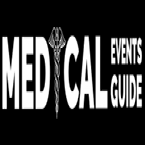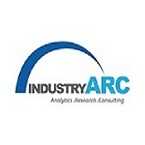Session and Tracks
TRACK 1 : Advances in Neurodegenerative Diseases
Advances in Neurodegenerative Diseases is a pivotal area of research that addresses complex disorders like Alzheimer’s, Parkinson’s, and Amyotrophic Lateral Sclerosis (ALS), all of which severely impact brain function and quality of life. Recent advances are providing hope by exploring disease mechanisms, innovative diagnostics, and groundbreaking treatments. Research has shed light on the role of protein misfolding and aggregation in neurodegenerative diseases, revealing key insights into how these proteins disrupt neural networks. Advanced imaging techniques, such as PET and MRI, now allow earlier detection of disease markers, enabling timely interventions. Additionally, breakthroughs in biomarkers, such as cerebrospinal fluid proteins and genetic profiling, offer promising avenues for more personalized treatments. Therapeutically, the development of disease-modifying drugs aims to slow progression rather than just alleviate symptoms. Novel approaches like gene therapy, CRISPR-based editing, and targeted monoclonal antibodies are under investigation, showing encouraging early results in clinical trials. Stem cell therapy is also making strides, with potential to regenerate damaged neural cells and restore functionality. These advances underscore a transformative era in neurodegenerative disease research. By focusing on underlying molecular mechanisms, clinicians and scientists are developing more targeted therapies that aim to improve patient outcomes and ultimately lead to cures for these debilitating conditions.
TRACK 2 : Neuroimmunology and Neuroinflammation
Neuroimmunology and Neuroinflammation is a rapidly evolving field that explores the intricate relationship between the nervous and immune systems, focusing on how immune responses impact neurological health. Neuroinflammation, the brain’s response to injury or disease, plays a key role in many neurological disorders, including multiple sclerosis (MS), Alzheimer's disease, and neuropsychiatric conditions. Recent research reveals that prolonged or abnormal inflammation in the brain can exacerbate neuronal damage and contribute to disease progression. Advances in understanding immune cell behavior within the brain, especially the roles of microglia and astrocytes, are unveiling mechanisms by which inflammation is regulated and sometimes dysregulated, leading to chronic conditions. Emerging therapies aim to modulate immune responses, with treatments like immunomodulators and monoclonal antibodies showing promising effects in reducing inflammation and slowing disease progression. Novel diagnostic biomarkers, such as inflammatory proteins detectable in cerebrospinal fluid and blood, are aiding earlier diagnosis and personalized care. Neuroimmunology continues to reshape approaches to treating and managing inflammatory-driven neurological disorders, offering new hope for improved patient outcomes.
TRACK 3 : Cognitive Neuroscience and Behavioral Disorders
Cognitive Neuroscience and Behavioral Disorders is a critical area of study focused on understanding the neural mechanisms underlying thought processes, emotions, and behaviors. This field examines how the brain supports cognitive functions such as memory, attention, language, and decision-making, and it investigates how disruptions in these processes contribute to behavioral disorders. Behavioral disorders, including ADHD, autism spectrum disorder, and schizophrenia, often stem from complex interactions among genetic, environmental, and neurobiological factors. Recent advances in brain imaging techniques, like functional MRI and EEG, have allowed researchers to observe brain activity patterns associated with these disorders, revealing abnormalities in connectivity and brain structure that affect behavior. With these insights, researchers are developing targeted interventions that address the root causes of behavioral symptoms. Cognitive-behavioral therapies, pharmacological treatments, and emerging neuromodulation techniques, such as transcranial magnetic stimulation, are providing promising results. By illuminating how brain function translates to behavior, cognitive neuroscience is helping to refine diagnostic tools and interventions, ultimately improving outcomes for individuals affected by behavioral disorders.
TRACK 4 : Neurogenetics and Epigenetics
Neurogenetics and Epigenetics are pivotal fields that explore the genetic and epigenetic influences on neurological health and disease. Neurogenetics focuses on understanding how genetic variations contribute to the development of the nervous system and the susceptibility to neurological disorders, such as Huntington's disease, Alzheimer's disease, and epilepsy. Advances in genomic technologies, including whole-genome sequencing and gene editing, are enhancing our understanding of specific genes associated with these conditions and their roles in neural function. Epigenetics, on the other hand, studies how environmental factors can modify gene expression without altering the underlying DNA sequence. Mechanisms such as DNA methylation and histone modification can influence neural development and plasticity, impacting learning, memory, and behavior. Research is revealing how stress, diet, and other environmental stimuli can lead to epigenetic changes that predispose individuals to neurological disorders. Together, neurogenetics and epigenetics provide valuable insights into the biological basis of neurological conditions, paving the way for personalized medicine approaches. By targeting genetic and epigenetic factors, researchers aim to develop innovative therapeutic strategies that improve prevention, diagnosis, and treatment of neurological disorders.
TRACK 5 : Neuropathology and Mechanisms of Brain Injury
Neuropathology and Mechanisms of Brain Injury focus on understanding the structural and functional changes that occur in the brain following various forms of injury, such as traumatic brain injury (TBI), stroke, and neurodegenerative diseases. Neuropathology investigates the cellular and molecular alterations that result from injury, including inflammation, oxidative stress, and neuronal death. In cases of TBI, the brain can experience both primary injury—resulting from the initial impact—and secondary injury, which involves cascades of biochemical processes that exacerbate damage over time. Understanding these mechanisms is crucial for developing effective therapeutic strategies to mitigate long-term consequences. Recent advancements in imaging techniques and biomarker discovery are enhancing the ability to diagnose and assess brain injury. Researchers are also exploring neuroprotective strategies and rehabilitation approaches that promote recovery, such as pharmacological interventions, physical therapy, and cognitive rehabilitation. By unraveling the complexities of neuropathology and brain injury mechanisms, scientists aim to improve diagnostic accuracy, identify potential therapeutic targets, and enhance recovery outcomes for individuals affected by various neurological conditions, ultimately leading to better management and care.
TRACK 6 : Neuropharmacology and Neurotherapeutics
Neuropharmacology and Neurotherapeutics play essential roles in the development and application of medications aimed at treating neurological disorders. Neuropharmacology focuses on understanding how drugs affect the nervous system, including the mechanisms of action, therapeutic effects, and side effects of various pharmacological agents. This knowledge is crucial for designing effective treatments for conditions such as depression, anxiety, epilepsy, and neurodegenerative diseases like Parkinson's and Alzheimer's. Recent advancements in neuropharmacology have led to the discovery of novel compounds and drug classes that target specific neurotransmitter systems, receptors, and signaling pathways. For example, innovative treatments like neuroprotective agents aim to slow disease progression in neurodegenerative conditions, while mood stabilizers and antipsychotics provide symptomatic relief in psychiatric disorders. Neurotherapeutics extends beyond traditional pharmacological approaches, incorporating neuromodulation techniques such as deep brain stimulation and transcranial magnetic stimulation. These advancements provide new avenues for treating challenging neurological conditions, ultimately enhancing patient outcomes and quality of life. As research continues to evolve, neuropharmacology and neurotherapeutics hold promise for transformative approaches in neurology.
TRACK 7 : Pediatric Neurology
Pediatric Neurology is a specialized field that focuses on diagnosing and treating neurological disorders in infants, children, and adolescents. This branch of medicine addresses a wide range of conditions, including epilepsy, cerebral palsy, neurogenetic disorders, migraines, and developmental delays. Pediatric neurologists work closely with families to understand the unique challenges and developmental needs of young patients. Recent advancements in pediatric neurology have improved diagnostic capabilities through advanced imaging techniques, such as MRI and CT scans, which allow for early identification of neurological issues. Genetic testing is also becoming increasingly important, helping to uncover underlying genetic disorders that affect neurological function. Therapeutic approaches in pediatric neurology often involve a multidisciplinary team, including neurologists, pediatricians, therapists, and educators, to create comprehensive treatment plans tailored to each child's needs. Treatments may include medication, physical therapy, and behavioral interventions, aimed at enhancing development and improving quality of life. By focusing on early intervention and tailored care, pediatric neurology strives to support optimal neurological health and development in children.
TRACK 8 : Neurological Disorders in Aging Populations
Neurological Disorders in Aging Populations encompass a range of conditions that significantly impact the elderly, often leading to declining cognitive and physical function. Common disorders include Alzheimer's disease, Parkinson's disease, vascular dementia, and other age-related neurodegenerative diseases. As the population ages, the prevalence of these conditions continues to rise, highlighting the need for effective prevention and management strategies. The aging brain undergoes various structural and functional changes that increase susceptibility to neurological disorders. Factors such as genetic predisposition, lifestyle choices, and comorbidities, including cardiovascular diseases and diabetes, further complicate diagnosis and treatment. Recent research emphasizes the importance of early detection and intervention, focusing on cognitive screening and the identification of risk factors. Therapeutic approaches may include pharmacological treatments, cognitive rehabilitation, and lifestyle modifications, such as exercise and diet, aimed at maintaining brain health. By addressing the unique challenges of neurological disorders in aging populations, healthcare providers can enhance the quality of life for older adults, fostering better management and care for those affected by these debilitating conditions.
TRACK 9 : Brain-Computer Interfaces and Neurotechnology
Brain-Computer Interfaces (BCIs) and Neurotechnology represent groundbreaking advancements in neuroscience, enabling direct communication between the brain and external devices. BCIs work by interpreting brain signals, allowing individuals to control computers, prosthetics, or other devices through thought alone. This technology has immense potential for enhancing the quality of life for people with neurological conditions, including paralysis, stroke, and neurodegenerative diseases. Recent developments in neurotechnology have focused on improving the accuracy and usability of BCIs through advanced signal processing, machine learning algorithms, and more sophisticated electrode designs. These innovations are facilitating real-time interaction and feedback, making BCIs more intuitive and effective for users. Additionally, neurotechnology encompasses a range of tools beyond BCIs, such as transcranial magnetic stimulation (TMS) and neuromodulation devices that target specific brain regions to treat conditions like depression and chronic pain. As research continues to evolve, the integration of BCIs and neurotechnology holds promise for revolutionizing rehabilitation, enhancing cognitive function, and providing new avenues for research in understanding brain activity and connectivity.
TRACK 10 : Epilepsy and Seizure Disorders
Epilepsy and Seizure Disorders are neurological conditions characterized by recurrent seizures, which are sudden, abnormal electrical discharges in the brain. These disorders can affect individuals of all ages and can manifest in various forms, ranging from focal seizures, which affect a specific area of the brain, to generalized seizures, impacting the entire brain. Epilepsy is diagnosed when a person experiences two or more unprovoked seizures, and it can be caused by a variety of factors, including genetic predisposition, brain injury, infections, or structural abnormalities in the brain. The unpredictability of seizures can significantly impact a person's quality of life, leading to concerns about safety, cognitive function, and social stigma. Recent advancements in the understanding of epilepsy have led to improved diagnostic techniques, such as high-resolution MRI and electroencephalography (EEG), allowing for better classification and management of seizure types. Treatment options include antiepileptic medications, lifestyle modifications, and in some cases, surgical interventions. Ongoing research into new therapies and devices, such as responsive neurostimulation, aims to enhance seizure control and improve the lives of those affected by epilepsy.
TRACK 11 : Neurosurgery Innovations and Techniques
Neurosurgery Innovations and Techniques are at the forefront of medical advancements, significantly improving the treatment of neurological disorders. Recent innovations include minimally invasive surgical techniques, such as endoscopic surgery and stereotactic navigation, which reduce recovery times and minimize damage to surrounding brain tissue. These methods allow surgeons to perform complex procedures with enhanced precision and lower risk of complications. Robotic-assisted surgery is another exciting development, providing neurosurgeons with greater dexterity and accuracy during delicate operations. Additionally, advancements in imaging technologies, such as intraoperative MRI and CT scans, enable real-time visualization of the brain, allowing for better planning and execution of surgeries. Neurostimulation techniques, such as deep brain stimulation (DBS), are also transforming the management of movement disorders like Parkinson's disease and epilepsy. These innovations allow for targeted modulation of neural circuits, improving symptoms and enhancing patients' quality of life.
TRACK 12 : Sleep Disorders and Circadian Neuroscience
Sleep Disorders and Circadian Neuroscience are critical areas of study that explore the complexities of sleep regulation and its impact on overall health. Sleep disorders, including insomnia, sleep apnea, restless legs syndrome, and narcolepsy, can significantly impair daily functioning and quality of life. Understanding the underlying mechanisms of these disorders is essential for effective diagnosis and treatment. Circadian neuroscience investigates the body’s internal clock, which regulates sleep-wake cycles and other physiological processes. This clock is influenced by external cues, such as light and temperature, and plays a vital role in maintaining optimal health. Disruptions to circadian rhythms, whether from shift work, travel across time zones, or irregular sleep patterns, can lead to various health issues, including mood disorders, metabolic syndrome, and cardiovascular diseases. Recent research emphasizes the importance of sleep hygiene and behavioral interventions in managing sleep disorders. Advances in technology, such as wearable sleep trackers, are also providing valuable data for understanding sleep patterns. By integrating insights from sleep disorders and circadian neuroscience, researchers aim to develop targeted therapies that improve sleep health and overall well-being.
TRACK 13 : Stroke and Cerebrovascular Disorders
Stroke and Cerebrovascular Disorders are significant health concerns, representing a leading cause of morbidity and mortality worldwide. A stroke occurs when blood flow to the brain is disrupted, leading to brain cell death. There are two primary types of strokes. Ischemic strokes, caused by a blockage in a blood vessel, and hemorrhagic strokes, resulting from bleeding in or around the brain. Early recognition and intervention are crucial for improving outcomes in stroke patients. Symptoms such as sudden weakness, speech difficulties, and vision changes require immediate medical attention. Advances in imaging technology, such as CT and MRI scans, have improved diagnostic accuracy, enabling healthcare providers to determine the type and extent of the stroke more rapidly. Recent research is also focusing on neuroprotective therapies aimed at minimizing brain damage during a stroke. Rehabilitation approaches, including physical, occupational, and speech therapy, play a vital role in recovery, helping individuals regain lost functions and improve their quality of life. By addressing both prevention and treatment, strides in understanding cerebrovascular disorders are paving the way for enhanced patient care and recovery strategies.
TRACK 14 : Mental Health, Neuropsychiatry, and Neuroscience
Mental Health, Neuropsychiatry, and Neuroscience intersect to enhance our understanding of the complex relationship between brain function and mental health disorders. Neuropsychiatry focuses on how neurological conditions impact mental health, emphasizing the need for integrated approaches to diagnosis and treatment. Disorders such as depression, anxiety, schizophrenia, and bipolar disorder often have neurological underpinnings, making interdisciplinary collaboration essential for effective care. Advancements in neuroscience have shed light on the biological mechanisms behind these mental health conditions, including neurotransmitter imbalances, neural circuit dysfunction, and genetic vulnerabilities. Techniques such as neuroimaging allow researchers to observe brain activity and structure changes associated with mental health disorders, facilitating better understanding and more targeted interventions. Innovative treatment modalities are emerging from this research, including neuromodulation techniques like transcranial magnetic stimulation (TMS) and deep brain stimulation (DBS), which show promise in alleviating symptoms for patients who do not respond to traditional therapies. By integrating insights from mental health, neuropsychiatry, and neuroscience, clinicians aim to improve diagnosis, treatment efficacy, and overall mental well-being, paving the way for a more holistic approach to mental health care.
TRACK 15 : Neuro-oncology: Brain Tumors and Treatment Approaches
Neuro-oncology is a specialized field focused on diagnosing and treating brain tumors and central nervous system (CNS) cancers. Brain tumors can be primary, originating within the brain, or secondary, resulting from metastasis from other body sites. These tumors can present unique challenges due to their location, which can affect vital functions and significantly impact a patient's quality of life. Recent advancements in neuro-oncology have enhanced diagnostic capabilities through advanced imaging techniques, such as MRI and PET scans, allowing for better tumor characterization and treatment planning. Molecular profiling of tumors has also become increasingly important, enabling personalized treatment strategies based on the genetic and molecular characteristics of the tumor. Treatment approaches typically involve a combination of surgery, radiation therapy, and chemotherapy, tailored to the tumor type, location, and patient health. Emerging therapies, including immunotherapy and targeted therapies, are showing promise in improving outcomes for patients with brain tumors. By integrating innovative research and clinical practices, neuro-oncology aims to provide more effective treatment options and improve survival rates for individuals diagnosed with brain tumors.
TRACK 16 : Neuroimaging and Diagnostics
Neuroimaging and Diagnostics are crucial components in the assessment and management of neurological disorders, providing valuable insights into brain structure and function. Advanced imaging techniques, such as Magnetic Resonance Imaging (MRI), Computed Tomography (CT), and Positron Emission Tomography (PET), have revolutionized the way clinicians visualize the brain, enabling accurate diagnoses of conditions like stroke, tumors, neurodegenerative diseases, and traumatic brain injuries. MRI, particularly, offers high-resolution images of brain anatomy, allowing for the detection of subtle changes that might indicate early disease processes. Functional imaging techniques, like fMRI, assess brain activity by measuring changes in blood flow, providing insights into functional connectivity and cognitive processes. These neuroimaging advancements facilitate timely intervention and personalized treatment plans, as they help identify the specific characteristics of a disorder. Moreover, emerging technologies, including diffusion tensor imaging (DTI) and machine learning algorithms, are enhancing diagnostic accuracy and prognostic predictions. By integrating neuroimaging into clinical practice, healthcare providers are better equipped to understand and address the complexities of neurological conditions, ultimately improving patient outcomes.
TRACK 17 : Movement Disorders: Diagnosis and Management
Movement Disorders Diagnosis and Management encompass a range of neurological conditions characterized by abnormal voluntary or involuntary movements. Common disorders include Parkinson's disease, essential tremor, dystonia, and Huntington's disease. Accurate diagnosis is essential for effective management, as symptoms can overlap and vary significantly among individuals. Clinicians typically conduct a thorough medical history and neurological examination, supplemented by advanced neuroimaging techniques such as MRI and PET scans to rule out other conditions. Additionally, biomarkers and genetic testing may be employed to confirm diagnoses, particularly in hereditary movement disorders. Management of movement disorders often involves a multidisciplinary approach, combining pharmacological and non-pharmacological therapies. Medications such as levodopa for Parkinson's disease can significantly alleviate symptoms. Furthermore, physical and occupational therapies are essential in maintaining mobility and improving daily functioning. In some cases, surgical interventions, such as deep brain stimulation (DBS), may be considered for patients with severe symptoms. By integrating comprehensive diagnostic strategies and tailored treatment plans, healthcare providers aim to enhance the quality of life for individuals with movement disorders.
TRACK 18 : Emerging Therapies in Neuromodulation
Emerging Therapies in Neuromodulation represent a frontier in the treatment of various neurological and psychiatric disorders, utilizing advanced technologies to modulate neural activity. Techniques such as transcranial magnetic stimulation (TMS), transcranial direct current stimulation (tDCS), and deep brain stimulation (DBS) are gaining traction as effective interventions for conditions like depression, anxiety, chronic pain, and movement TMS employs magnetic fields to stimulate specific brain regions, showing promise in treating major depressive disorder and enhancing cognitive function. tDCS, a non-invasive technique, applies a low electrical current to alter neuronal excitability, with applications in stroke rehabilitation and cognitive enhancement. DBS involves implanting electrodes in targeted brain areas to regulate abnormal electrical activity, effectively alleviating symptoms in patients with Parkinson's disease and essential tremor. Research continues to explore new applications and optimize these neuromodulation therapies, including personalized approaches that tailor treatment to individual patient needs. As our understanding of brain connectivity and function deepens, emerging neuromodulation therapies hold the potential to transform how we manage and treat neurological and psychiatric conditions, improving patient outcomes and quality of life.
TRACK 19 : Rehabilitation and Neuroplasticity
Rehabilitation and Neuroplasticity are interrelated concepts that highlight the brain's remarkable ability to adapt and reorganize itself following injury or illness. Neuroplasticity refers to the brain's capacity to change its structure and function in response to experience, learning, and environmental stimuli. This adaptability is crucial for recovery in individuals who have suffered strokes, traumatic brain injuries, or neurodegenerative diseases. Rehabilitation strategies leverage neuroplasticity to promote recovery and improve functionality. Techniques such as physical therapy, occupational therapy, and speech therapy focus on retraining the brain and body to restore lost skills and enhance quality of life. Intense practice and repetitive task training are particularly effective in stimulating neuroplastic changes, facilitating the formation of new neural connections. Recent advancements in technology, such as virtual reality and robotic-assisted therapy, are further enhancing rehabilitation outcomes by providing engaging, adaptive environments that motivate patients and encourage participation. By understanding and harnessing the principles of neuroplasticity, rehabilitation programs aim to maximize recovery potential, enabling individuals to regain independence and improve their overall well-being.
TRACK 20 : Artificial Intelligence and Big Data in Neurology
Artificial Intelligence (AI) and Big Data in Neurology are transforming the landscape of neurological research, diagnosis, and treatment. The integration of AI technologies allows for the analysis of vast amounts of data generated from neuroimaging, genetic profiling, and electronic health records, leading to enhanced understanding of complex neurological disorders. AI algorithms, particularly machine learning models, can identify patterns and predict outcomes more accurately than traditional methods. For instance, AI can assist in early diagnosis of conditions like Alzheimer's disease by analyzing biomarkers and imaging data, thereby facilitating timely interventions. Big data analytics enable researchers to correlate diverse datasets, uncovering insights into disease progression, treatment responses, and patient demographics. This wealth of information can inform personalized medicine approaches, tailoring treatments to individual patient needs and improving outcomes. Moreover, AI-driven tools are being developed for real-time monitoring and management of neurological conditions, enhancing patient care. As research continues to evolve, the collaboration between AI and big data in neurology promises to revolutionize how we approach diagnosis, treatment, and understanding of neurological diseases.









